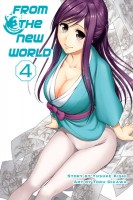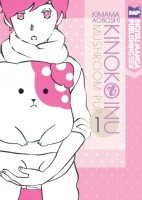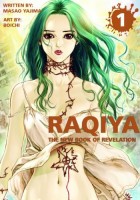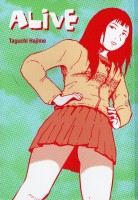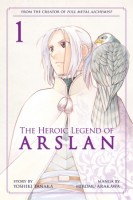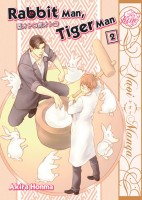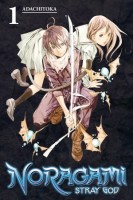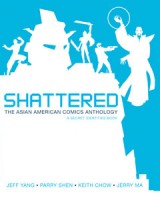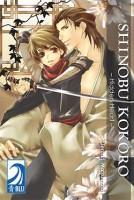My News and Reviews
Two manga reviews were posted at Experiments in Manga last week, both with a bit of queer bent to them. First, I took a look at Wandering Son, Volume 7 by Takako Shimura. Wandering Son is a series that means a tremendous amount to me personally, so I’m always happy when a new volume is released. (And speaking of releases—Fantagraphics assured me that the eighth volume will be published sometime next year.) My second review from last week was of Fumi Yoshinaga’s What Did You Eat Yesterday?, Volume 4, which I continue to thoroughly enjoy (even though it can sometimes make me hungry when I’m reading it).
A while back I, and a handful of other people, were interviewed by Justin Stroman about why we buy manga. He turned it into a pretty great article, so I hope you’ll check out Why It’s Worth It to Buy Manga over on Manga Bookshelf. As a followup of sorts, Justin also posted Life As a Manga Fan in the United Arab Emirates at Organization Anti-Social Geniuses which was a fascinating read. Another interesting interview from last week was Tofugu’s conversation with translator and interpreter Jocelyne Allen who has translated a ton of manga among other things. Also of note: Breakdown Press recently announced its next alternative manga publication—Masahiko Matsumoto’s “The Man Next Door.”
Quick Takes
 I’ve Seen It All, Volumes 1-2 by Shoko Takaku. The featured guest of this year’s YaoiCon was Shoko Takaku. I realized that I hadn’t actually read any of her work, so I decided to pick up I’ve Seen It All. Dr. Saikawa is a specialist in men’s health, specifically addressing concerns dealing with genitals. By chance he meets and soon falls in love with Asano who is blessed with a “cock of peerless beauty.” I’ve Seen It All easily has the most references to penises that I’ve ever come across in a boys’ love manga. Saikawa is completely unfazed about it—it is his job after all—and no one else seems to be either which just makes the manga even funnier. Asano and Saikawa are adorable as a couple. It was also nice to see that they both try to make sure that the other enjoys their more intimate moments (of which there are plenty). The other characters are pretty great, too. Despite some of the more realistic elements of the series, I’ve Seen It All leans slightly more towards the silly and sweet. Happily, there is at least one more volume of I’ve Seen It All; I just hope that the rest of the series will be translated because I loved the first two volumes.
I’ve Seen It All, Volumes 1-2 by Shoko Takaku. The featured guest of this year’s YaoiCon was Shoko Takaku. I realized that I hadn’t actually read any of her work, so I decided to pick up I’ve Seen It All. Dr. Saikawa is a specialist in men’s health, specifically addressing concerns dealing with genitals. By chance he meets and soon falls in love with Asano who is blessed with a “cock of peerless beauty.” I’ve Seen It All easily has the most references to penises that I’ve ever come across in a boys’ love manga. Saikawa is completely unfazed about it—it is his job after all—and no one else seems to be either which just makes the manga even funnier. Asano and Saikawa are adorable as a couple. It was also nice to see that they both try to make sure that the other enjoys their more intimate moments (of which there are plenty). The other characters are pretty great, too. Despite some of the more realistic elements of the series, I’ve Seen It All leans slightly more towards the silly and sweet. Happily, there is at least one more volume of I’ve Seen It All; I just hope that the rest of the series will be translated because I loved the first two volumes.
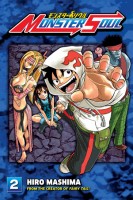 Monster Soul, Volume 2 by Hiro Mashima. I’ll admit, I did enjoy the second and final volume of Monster Soul slightly more than the first, but it’s still not a series that left much of an impression on me. Where the first volume was largely episodic, the majority of the second volume of Monster Soul focused on one story—the Black Airs’ efforts to rescue the souls of an entire kingdom of humans from the clutches of the Drei Kommandos. In the process, Mashima takes the opportunity to delve into the back stories of the individual members of the Black Airs. I personally appreciated that the characters were further developed, but the series is too short to really take advantage of it all. Although Monster Soul doesn’t stand out much, it is generally entertaining. The action sequences in particular are fairly well done. Admittedly, there are a few annoying character quirks that don’t make much sense within the context of the story as a whole, such as Mummy’s propensity for stripping for no particular reason. Overall, Monster Soul feels more like a prototype than anything else. It is very energetic, though.
Monster Soul, Volume 2 by Hiro Mashima. I’ll admit, I did enjoy the second and final volume of Monster Soul slightly more than the first, but it’s still not a series that left much of an impression on me. Where the first volume was largely episodic, the majority of the second volume of Monster Soul focused on one story—the Black Airs’ efforts to rescue the souls of an entire kingdom of humans from the clutches of the Drei Kommandos. In the process, Mashima takes the opportunity to delve into the back stories of the individual members of the Black Airs. I personally appreciated that the characters were further developed, but the series is too short to really take advantage of it all. Although Monster Soul doesn’t stand out much, it is generally entertaining. The action sequences in particular are fairly well done. Admittedly, there are a few annoying character quirks that don’t make much sense within the context of the story as a whole, such as Mummy’s propensity for stripping for no particular reason. Overall, Monster Soul feels more like a prototype than anything else. It is very energetic, though.
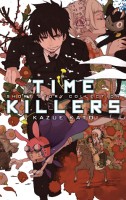 Time Killers by Kazue Kato. While I largely enjoyed Kato’s manga series Blue Exorcist, I never seemed to be quite as taken with the story as so many others were. However, I’ve always been fond of Kato’s artwork. And so, I was very interested in reading Kazuo’s short story collection Time Killers. The anthology collects eleven short manga selected from over a decade’s worth of Kazuo’s work, including some of her earliest and debut stories. Many of the manga included in Time Killers simply consist of whatever elements Kazuo felt like exploring and mashing together, completely disregarding what readers might be interested in. The manga ends up being a somewhat odd conglomeration with a strong indie feel to it, but I rather enjoyed its quirkiness. The collection also includes a story that is derived from the same source material as Blue Exorcist, which was interesting to see. It’s also worth noting that Time Killers is probably the nicest release that I’ve seen from Viz Media’s Shonen Jump imprint. It has a slightly larger trim size, includes beautiful color pages, and is printed on high-quality, glossy paper, too.
Time Killers by Kazue Kato. While I largely enjoyed Kato’s manga series Blue Exorcist, I never seemed to be quite as taken with the story as so many others were. However, I’ve always been fond of Kato’s artwork. And so, I was very interested in reading Kazuo’s short story collection Time Killers. The anthology collects eleven short manga selected from over a decade’s worth of Kazuo’s work, including some of her earliest and debut stories. Many of the manga included in Time Killers simply consist of whatever elements Kazuo felt like exploring and mashing together, completely disregarding what readers might be interested in. The manga ends up being a somewhat odd conglomeration with a strong indie feel to it, but I rather enjoyed its quirkiness. The collection also includes a story that is derived from the same source material as Blue Exorcist, which was interesting to see. It’s also worth noting that Time Killers is probably the nicest release that I’ve seen from Viz Media’s Shonen Jump imprint. It has a slightly larger trim size, includes beautiful color pages, and is printed on high-quality, glossy paper, too.

